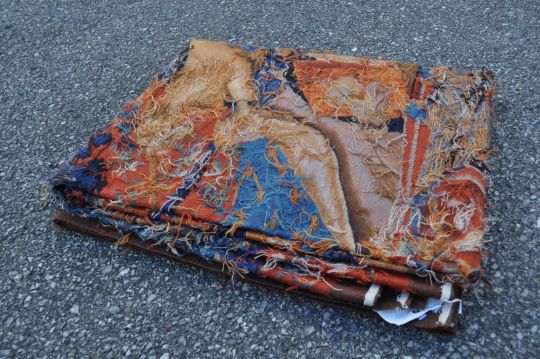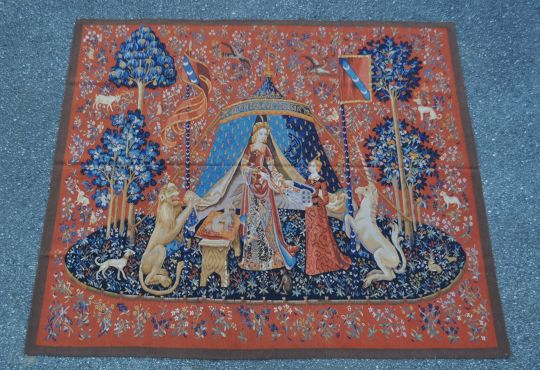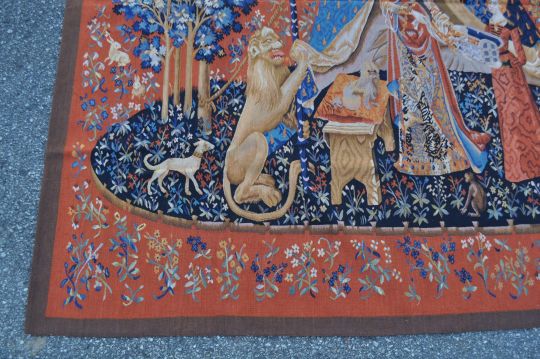#frenchgobelins
Text





The Lady and the Unicorn is the modern title given to a series of six tapestries woven in Flanders from wool and silk, from designs drawn in Paris around 1500. The set, on display in the Musée national du Moyen Âge in Paris, is often considered one of the greatest works of art of the Middle Ages in Europe.
This tapestry is named A Mon Seul Desir, which is one of the famous six tapestries in the The Lady and the Unicorn series residing in the Cluny museum. Woven in about 1511 they feature the arms of Jean le Viste. Each represents one of the senses except for the final A Mon Seul Desir, also known as My Sole Desire. It depicts a woman stands in a garden before an open tent that bears the phrase "à mon seul desir (My only desire)." The phrase is open to a number of interpretations including "according to my desire/will alone." The woman is flanked by a lion and a unicorn that display the Le Viste coats of arms. She holds a jeweled chain in her veil--the very chain she wears in the accompanying panels in this series. Scholars continue to debate whether she is placing the chain in the casket or taking it from it. This scene is often interpreted as the refusal of temptation, in which the woman renounces the pleasures of the five senses that are depicted in the accompanying panels. Other interpretations consider the woman's virginity as the focus of the work.
The tapestries were rediscovered in 1841 by Prosper Mérimée in Boussac castle (owned at the time by the subprefect of the Creuse) where they had been suffering damage from their storage conditions. In 1844 the novelist George Sand saw them and brought public attention to the tapestries in her works at the time (most notably in her novel Jeanne), in which she correctly dated them to the end of the fifteenth century, using the ladies' costumes for reference. Nevertheless, the artefacts continued to be threatened by damp and mould until 1863, when they were brought to the Thermes de Cluny in Paris. Careful conservation has restored them nearly to their former glory.
#frenchtapestry#frenchdecor#frenchdecoration#europeantapestry#palacetapestry#handwoventapestry#frenchgobelins#aubussontapestry
0 notes